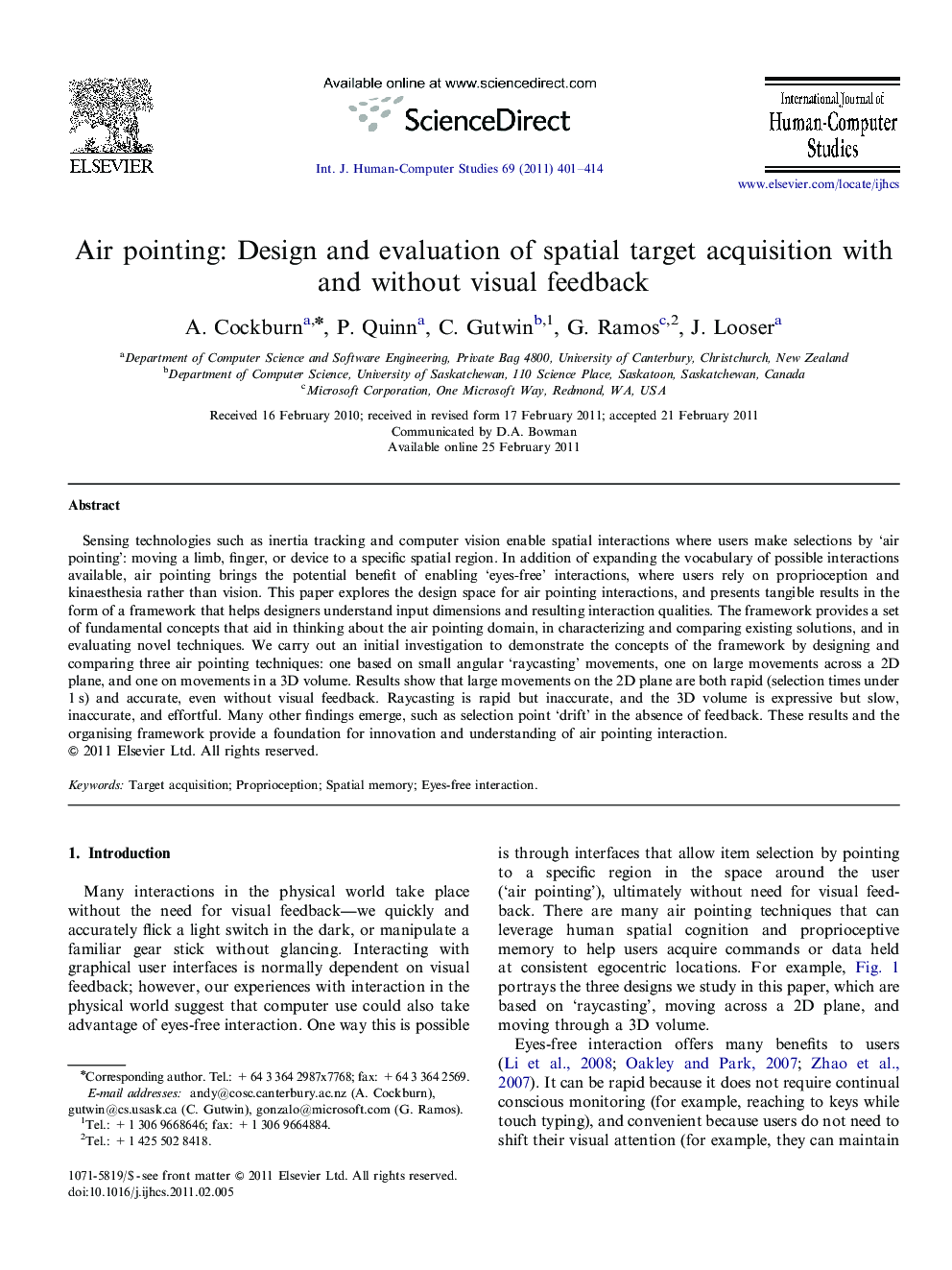| کد مقاله | کد نشریه | سال انتشار | مقاله انگلیسی | نسخه تمام متن |
|---|---|---|---|---|
| 400981 | 1439019 | 2011 | 14 صفحه PDF | دانلود رایگان |

Sensing technologies such as inertia tracking and computer vision enable spatial interactions where users make selections by ‘air pointing’: moving a limb, finger, or device to a specific spatial region. In addition of expanding the vocabulary of possible interactions available, air pointing brings the potential benefit of enabling ‘eyes-free’ interactions, where users rely on proprioception and kinaesthesia rather than vision. This paper explores the design space for air pointing interactions, and presents tangible results in the form of a framework that helps designers understand input dimensions and resulting interaction qualities. The framework provides a set of fundamental concepts that aid in thinking about the air pointing domain, in characterizing and comparing existing solutions, and in evaluating novel techniques. We carry out an initial investigation to demonstrate the concepts of the framework by designing and comparing three air pointing techniques: one based on small angular ‘raycasting’ movements, one on large movements across a 2D plane, and one on movements in a 3D volume. Results show that large movements on the 2D plane are both rapid (selection times under 1 s) and accurate, even without visual feedback. Raycasting is rapid but inaccurate, and the 3D volume is expressive but slow, inaccurate, and effortful. Many other findings emerge, such as selection point ‘drift’ in the absence of feedback. These results and the organising framework provide a foundation for innovation and understanding of air pointing interaction.
Research highlights
► Investigates interaction design space for eyes-free spatial target acquisition.
► Shows that large-scale movement selections on a 2D plane are rapid and accurate.
► Shows that small-scale movement selections using ‘raycasting’ are rapid but inaccurate.
► Shows that large-scale movement selections in a 3D volume are slow, inaccurate, and effortful.
► Shows that perceived target locations suffer drift without visual feedback.
Journal: International Journal of Human-Computer Studies - Volume 69, Issue 6, June 2011, Pages 401–414